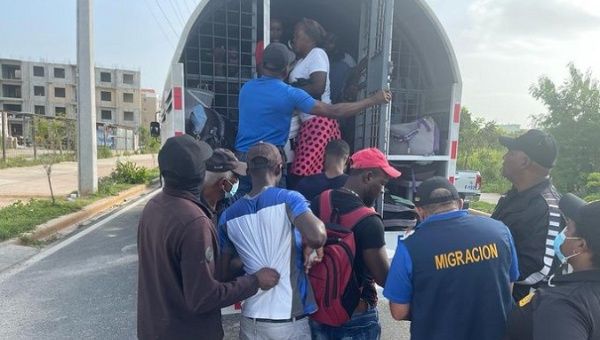
The Dominican Republic is currently deporting any dark-skinned person it encounters. This includes Haitians, who have throughout history been extremely hated on by the Dominican government, as well as dark-skinned Dominicans and dark-skinned tourists. They are not bothering to stop people and ask for papers, etc. They are simply rounding up all dark people. They are also endeavoring to build a wall to formally cut across Hispaniola.
This situation serves as an important reminder of an uncomfortable truth: that communities of color are not immune from anti-blackness. Anti-black sentiment pervades both the politics of Hispaniola and interpersonal relationships among members of the Dominican diaspora. While the Haitian people were the very first to end chattel slavery on their land and won independence from France in 1804, the Dominican government continued to engage in the slave trade and remained loyal to its own colonizer, Spain, for decades.
During the Haitian Revolution, Dominican authorities worried that Haiti’s revolutionary ideas might spread to the Dominican side of Hispaniola. When they inevitably did just that, Haitians came to the Dominicans’ aid— and have received one hell of a thank you:
Haiti responded to the cries for freedom from the enslaved people of Santo Domingo twice. In 1801, following a major rebellion on the Boca de Nigua sugar plantation, Toussaint L’Ouverture, the architect of the Haitian Revolution, chose that site to announce the abolition of slavery in Santo Domingo. But freedom was short-lived; France later captured L’Ouverture and took over Santo Domingo in a strategic effort to recapture Haiti long after the revolution had been won.
Like Bolívar, Dominican rebels appealed to Haitian rulers for arms and support as they attempted to overthrow colonial rule and unify with Haiti. With the support of the Black majority, Haiti’s president Jean-Pierre Boyer abolished slavery and proclaimed Dominican emancipation for a second time on February 9, 1822. Hispaniola became the only independent nation in the Caribbean and the only region in the Americas where slavery was abolished.
But 22 years later, after the unification period with Haiti ended, the white elite re-annexed Santo Domingo to Spain. Black Dominican rebels understood the implicit threat of re-enslavement and again implored Haiti for its support in overthrowing Spanish rule. Defying threats from Spain, Haiti supplied the Dominican rebels with arms, fighters, and safe harbor. Dominicans, with the help of their Haitian allies, defeated the Spanish in 1865. Today, however, Haitians face the most extreme human rights abuses in the Dominican Republic; in the neighboring country, many people of Haitian descent are trapped in a form of indentured servitude on sugar plantations, while their descendants are stripped of their citizenship.
—From Afroresistance
During the Trujillo era, which began in the 1930s, Haitians were rounded up and shot indiscriminately. Many dark-skinned Dominicans were also killed. A common test to see who was Haitian and therefore eligible for execution consisted of lining people up and asking them, one by one, to pronounce a particular word. If a Haitian accent was detected, down they went. If someone said the word “properly” but happened to be dark-skinned, that person was often murdered anyway. Any evidence that Dominicans and Haitians might have shared ancestry, or at the very least might not be as different as people think, had to be suppressed, in order to propagate the notion that Haiti was the black side of the island while the Dominican Republic was more European— aka white.
(Trujillo’s hatred of his own people was so palpable that he abhorred Bachata music, which developed in the Dominican countryside and was often played by campesinos. Playing Bachata, or bolero campesino, loudly in front of Trujillo’s place and other government buildings became a form of resistance.)
Those of us with Dominican blood have all had at least one encounter with a relative highlighting the anti-blackness that continues to pervade Dominican culture. I was not told of my Taino ancestry until I was well into my teens— and even then, as a whisper, by one parent, warning me to never ever mention it to the other parent.
Meanwhile, growing up, whenever my Dominican grandparents watched TV and a black person appeared on the screen, my grandfather would mutter curse words and change the channel. (I was too young to understand why he was doing it— or even that those Spanish words were curses— and therefore not capable of challenging him on the matter.)
The last time I tried to discuss Dominican-Haitian relations with a Dominican relative was upon the expiration of the emergency visas some Haitians had been granted in the wake of Hurricane Matthew in 2010. I was met with shrugs: It was always supposed to be temporary, right? They got their help— what more could they want?
This very sentiment was recently expressed by the current Dominican president, Luis Abinader, who said in defense of this latest round of deportations: “You can’t ask anything more of the Dominican Republic.”
If Haitians had said the same back in 1844, the Dominican Republic might still be a colony today.
Received by email.